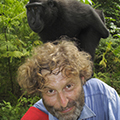Make a donation
The Museum is a charity and we rely on your support.
Make a donation today and support our 350 scientists who are working to build resilient habitats, protect vulnerable species and secure a sustainable future for our planet.

Watching one set of spicules after another come into focus under the microscope was, says David, ‘like drifting through a magical galaxy’.
Spicules are the calcareous skeletal remains of tiny, soft-bodied marine invertebrates such as sea fans and sea whips (corals), sea cucumbers and sponges. These spicules, no bigger than grains of salt, accumulate on the seabed and wash up as sand, often turning beaches gleaming white. David attached his camera to a microscope to photograph an old sample on a Victorian slide. ‘I wanted an image that would reveal the diversity and architectural beauty of the remains.’ The technical challenge was to get a perfect plane of focus. ‘I spent ages making tiny adjustments, to get the right 3D effect,’ he explains.

UK
David is a professional nature and science photographer specialising in small and microscopic forms. He is the recipient of numerous international awards and his specialist super-macro and microscopic photographic skills have been commissioned for collaborations with the BBC on series including Wonders of Life, Human Universe and The Science of Food. David also lectures at universities and international conferences and has been a jury panel member for leading international photography competitions.
Help us harness the power of photography to advance scientific knowledge, spread awareness of important issues and nurture a global love for nature.


